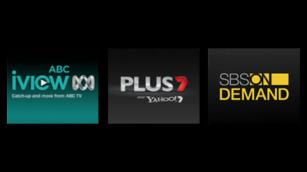It’s no secret that over the last few years, the growth of Connected TV, Internet TV and Video on Demand (VoD) content has led to a decrease in real-time TV viewing. There are now more than half a billion connected TV devices in use around the world, and in the UK alone, connected Sky+ homes watch 33% more catch up TV and x3 more VoD than the unconnected Sky+ homes. In short, brands can no longer rely on live, TV advertising to reach their mass audience.
Conversely, in Australia, real time TV still remains popular, and sadly Netflix has yet to reach our shores, at least for those waiting diligently to obtain it legally. But things are about to change; this week Cricket Australia launched an Apple TV channel, giving fans access to extra content and information beyond the live matches. It is the first Australian sport to launch on the platform, following suit from the US, which has already launched similar channels for the NBA and NFL.
In a similar announcement, Mamamia Women’s Network, a runaway social success story, from Australian Mummy blog, to nationally recognised website that appeals to women 25-45, is soon to launch Mamamia TV. According to their editor-in-chief, Jamila Rizvi, the aim is to produce snackable TV-style content for the web. Rizvi claims that, unlike other media companies, Mamamia isn’t having to shift to understand digital or what women want out of content, as the network is already there. She said the extension of the platform to TV is due to demand; they now receive over 420,000 views a day on their site, compared to 20,000 views, 2 years ago.
On a larger scale, Vice TV is also making a splash globally and showing how brands that are willing to be reactive and involve themselves in topical news are met with likes, shares and mentions of their content across the web. Ultimately tbrands who use this form of advertising ensure their message has a much stronger, more organic impact, when compared to brands that spend high in traditional media and achieve reach with little reward.
Based on the Connected TV penetration globally, and the increasing demand for bite sized content, I predict that 2015 will be a key year for both the Global and Australian Connected TV industry and with it, will change the way brands can reach, engage and share content with their fans. In addition, the low cost nature of content production means integration of social campaigns within the TV content is relatively easy and a low barrier to entry for brands that otherwise cannot spend fortunes on traditional media.
YouTube will still be a cost effective way to upload and share videos, however partnering with smaller media brands, to introduce social campaigns via Connected TV platforms, where audiences already go to access short form content they love to watch, could present brands with new opportunities to engage in a social manner.
